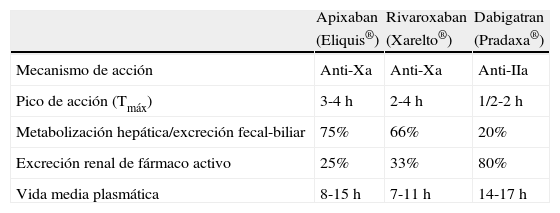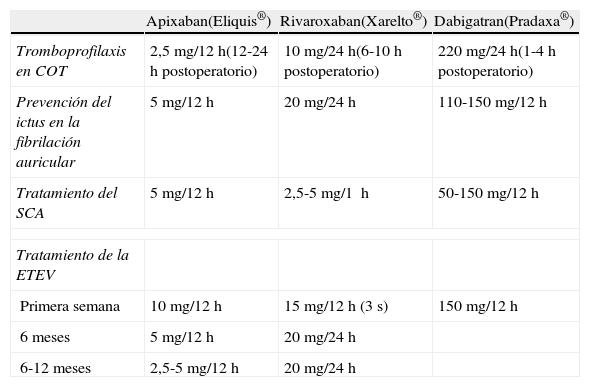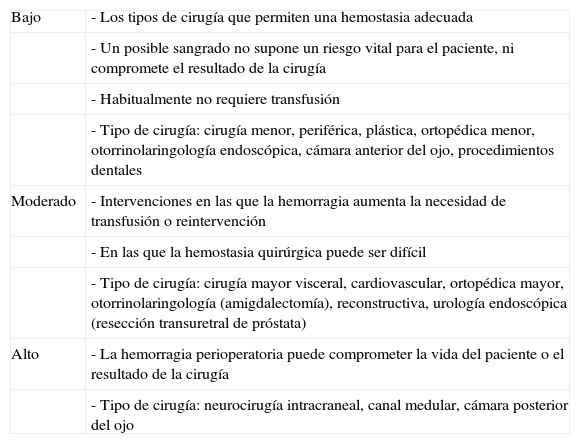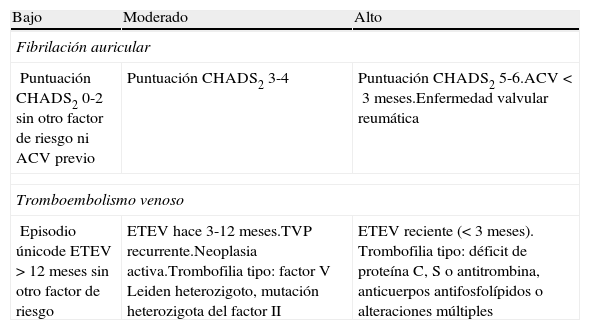El manejo de los nuevos anticoagulantes orales de acción directa (ACOD) en pacientes en tratamiento prolongado supone la necesidad de adecuar el riesgo hemorrágico de su administración con el riesgo trombótico de su supresión.
En el presente artículo se proponen recomendaciones para su manejo: A) tromboprofilaxis y anestesia regional: la realización de anestesia regional si se administra un ACOD como tromboprofilaxis precisa de unos intervalos de seguridad basados en sus parámetros farmacocinéticos; B) manejo de los ACOD en cirugía programada: en pacientes con función renal normal y riesgos hemorrágico/trombótico bajos, suspender el ACOD 2 días antes de la cirugía; si el riesgo hemorrágico/trombótico es alto y/o la función renal está alterada, se propone una terapia puente con una heparina de bajo peso molecular desde 5 días antes de la cirugía, y C) manejo de los ACOD en cirugía urgente y hemorragia relacionada: no se recomienda la administración sistemática de hemostáticos de forma profiláctica. En caso de hemorragia aguda que pueda poner en riesgo la vida del paciente (por volumen o por localización), se debe valorar la administración de concentrados de complejo protrombínico, plasma fresco o factor VIIa, junto con las medidas generales de control de la hemorragia aguda.
Estas recomendaciones se deben considerar en el contexto de empleo de unos fármacos que no poseen antídoto específico, cuya monitorización con los tests habituales de la coagulación no está sistematizada y con los que existe una experiencia limitada. Consideramos necesaria su revisión en un futuro, según estudios futuros y la experiencia clínica que se vaya obteniendo.
The new direct-acting oral anticoagulants (ACOD) in patients on prolonged treatment require the need to balance the risk of haemorrhage by administering them against the risk of thrombosis on withdrawing them.
Recommendations for their management are proposed in the present article: A) Thromboprophylaxis and general anaesthesia: the performing of regional anaesthesia if administered with an ACOD as thromboprophylaxis requires some safety intervals based on their pharmacokinetic parameters; B) Management of ACOD in elective surgery: in patients with normal renal function and a low haemorrhage/thrombosis risk, stop the ACOD two days before the surgery; it the haemorrhage/thrombosis risk is high and/or renal function is impaired, therapy with a low molecular weight heparin is proposed from 5 days prior to the surgery, and C) Management of ACOD in urgent surgery and associated haemorrhage: the systematic prophylactic administration of haemostatics is recommended. In the event of acute bleeding that may place the life of the patient at risk (due to volume or location), the administration of concentrated prothrombin complex, fresh plasma, or factor VIIa, must be assessed, together with general control measures of acute haemorrhage.
These recommendations should be considered in the context of the use drugs that do have a specific antidote, where their monitoring by the usual coagulation tests is not routine, and with those in which there is limited experience. We believe they need to be reviewed in the future, depending on further studies and clinical experience obtained.















